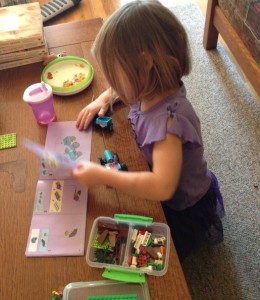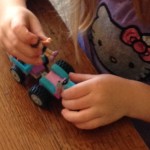Do you remember Barbie dolls? They appeared with designer clothes in toy stores and children’s lives in 1959; handsome Ken showed up in 1961. To me, who had moved on from dolls to a bicycle by that time, it seemed like every one’s little sister had a set and I was more than a little jealous that I had missed out.
By the mid 1970s, when my own children were born, these popular dolls had become the subject of parental angst. Should little girls be encouraged to look like this curvaceous model? And how about boys? Could they play with Ken dolls, or would that cast doubts on their masculinity? For me personally, the main issue with Barbie and Ken was their skinny bodies. Even before the anorexia and bulemia epidemic, I suspected that these beautiful and oh-so-thin creatures were going to be hard on preteen egos.
When GI Joe had appeared in stores in 1964, the Vietnam War was already in progress, and now anti-war sentiment got mixed up with concerns about gender-specific toys. Was it ok for boys to play with GI Joe dolls? Was it ok for any child to play with war toys?
Jumping into the fray, Charlotte Zolotow published William’s Doll in 1972 about a boy who wants a doll. His father gives him a basketball and a train set instead, but William continues to ask for a doll. Eventually, Grandma fulfills her grandson’s wish, explaining to Dad that William will use it to practice being a good father. (Yay, Granny!)
Meanwhile, parents were buying building blocks and Erector® sets for their daughters, in order to prepare them to be architects and engineers. Ok, fine, but some went so far as to NOT give their girls baby dolls. The truth is, toys, whether they be dolls or building sets, miniature digging sticks or small swords, are and have always represented and prepared children for adult pursuits, and when we realize that the messages they send to our children are not what we want to communicate, we get a bit cranky.
Leading up to the holidays this year there was a discussion on Facebook about the need — or appropriateness — of a new line of Lego® toys called Lego Friends. I was in England at the time and spending very little time on FB, so I innocently tucked a small Lego Friends set into my suitcase when I came home. Because it had girl characters, a cute puppy and a bone, it was an instant hit with my granddaughter so I purchased a larger set for her fourth birthday with a barn and two ponies.
Unknown to me, her parents had taken a different tack to selecting manipulatives, and found a set with a helicopter rescue story line, and a cheetah hiding in a tree. Since Bean’s dad does Search and Rescue, that set was right up there with the pony and ranch set I gave her, so everyone seems to be happy. Everyone in our family, at least.
Most parents seem to be on one side of the Lego Friends issue or another. Girls like story lines with their building sets, and Lego was attempting to incorporate story into their new offerings. However, at least one woman, Maritsa Patrinos, didn’t think that was necessary and published a comic explaining why. It went viral. Here is a link to the comic and a wonderful interview with the author by Rebecca Hains, author of The Princess Problem: Guiding Our Girls Through the Princess-Obsessed Years, on whose blog Maritza Patrinos’ comic strip was discussed so heatedly.
Meanwhile, the doll body image concerns continue. Only the products have changed. A video on Facebook about a woman who rescues Bratz dolls from thrift shops and repaints their faces went viral last week. I’ll let you find the video on FB, but here’s a link to an article about the doll artist:
What do YOU think about all this? Are these gender-directed toys causing issues for your family? If so, how do you deal with them? Should we worry about the messages toys send to our children or can we guide them through the stages of gender identity development in spite of them?
I’d love to know what you think.
Share this post






Offshoots of the common brick contain such toys as Lego Robotics,
Star Wars Lego, Harry Potter Legos and numerous other making toys
and kids’ online games. Although it isn’t a new tradition, modern day calendars bear little similarity to those used in the 19th Century.
These can vary from games that are enjoyable to ones that do teach instructional knowledge or even creativity.